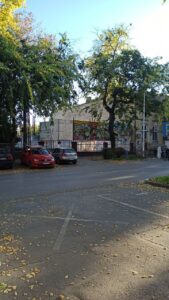The impact of climate on real estate choices in Subotica.
Subotica, a picturesque city located in northern Serbia, has become a focal point for real estate investment and development in recent years. As climate change continues to affect global weather patterns, the implications for real estate choices are becoming increasingly pronounced. This article delves into how climate affects property values, buyer preferences, and urban planning in Subotica, painting a comprehensive picture of the new dynamics in real estate decision-making influenced by environmental factors.
The Influence of Climate on Property Values
The climate of Subotica is characterized by distinct seasonal changes, including hot summers and cold winters. These fluctuations can significantly impact property values, as potential buyers often seek homes that offer comfort and energy efficiency. Properties that are well-insulated and equipped with energy-efficient heating and cooling systems tend to attract higher prices. As a result, sellers are motivated to invest in upgrades that enhance their homes’ resilience to temperature extremes, creating a ripple effect in the local real estate market.
Moreover, the seasonal weather patterns in Subotica can affect adjacent areas differently. For instance, properties closer to Lake Palic may benefit from recreational appeal during warmer months, enhancing their desirability and market value. Conversely, homes in regions prone to flooding or erosion may experience depreciation as climate concerns rise. Thus, the understanding of local climate nuances is crucial for both buyers and sellers aiming to make informed decisions about property investments.
Finally, the effect of climate on property values extends beyond immediate buyers and sellers. Investors are paying closer attention to the long-term implications of climate change, particularly regarding sustainability and resilience. The appreciation of green buildings—those designed with sustainable materials and practices—indicates a growing trend where climate-conscious development can lead to favorable financial returns.
Buyer Preferences Shaped by Climatic Conditions
In Subotica, changing climate patterns are influencing buyer preferences and residential choices. As individuals become more aware of the impacts of climate change, they are increasingly considering factors like energy efficiency, location, and building materials in their property selections. For instance, homes that promote sustainable living, such as those equipped with solar panels and energy-efficient appliances, are becoming more attractive to environmentally-conscious buyers.
Furthermore, the prevalence of extreme weather events is prompting buyers to invest in properties that are fortified against climate-related hazards. Homes equipped with advanced drainage systems or those situated on elevated terrain are more appealing to potential homeowners who prioritize safety over aesthetic value. This shift in buyer demand influences developers to reevaluate their construction practices and amenities in order to align with changing consumer preferences, thereby contributing to a more resilient urban landscape.
Additionally, the impact of climate on lifestyle choices is also reflected in the amenities associated with homes. Properties within proximity to parks, green spaces, and bodies of water are becoming highly desirable as residents seek outdoor recreational opportunities. Consequently, real estate developers in Subotica are increasingly incorporating environmentally friendly features into their projects, which not only enhances property value but also fosters a community ethos centered around sustainability and climate adaptation.
Urban Planning and Climate Resilience
Urban planning in Subotica is starting to adapt to the realities of climate change, emphasizing the need for resilience in infrastructure and land use. City planners are now incorporating climate predictions into their strategic frameworks, aiming to mitigate the effects of climate fluctuations on urban environments. This involves zoning regulations that prioritize green spaces and lower-density developments, which help combat the urban heat island effect and contribute to better air quality.
Moreover, Subotica’s infrastructure is being modernized to withstand environmental stresses such as heavy rainfall and extreme temperatures. Initiatives to implement efficient stormwater management systems are essential in reducing the risk of urban flooding while also enhancing the overall aesthetic of the city. These proactive measures not only protect property investments but also foster a more livable environment, thus encouraging real estate development that aligns with ecological sustainability.
Finally, community involvement in urban planning allows Subotica’s residents to voice their climate concerns, helping shape policies that reflect local needs. Engaging citizens in the planning process leads to more holistic approaches that prioritize sustainability alongside economic growth. Such collaboration between citizens, developers, and municipal authorities lays the groundwork for a resilient real estate market that is responsive to climate challenges while preserving the cultural heritage of Subotica.
In conclusion, the impact of climate on real estate choices in Subotica is an evolving narrative shaped by the interplay of environmental factors and socioeconomic developments. Understanding how climate influences property values, buyer preferences, and urban planning is essential for stakeholders within the real estate market. As Subotica continues to adapt to the challenges posed by climate change, it is evident that strategic foresight and community engagement will play vital roles in shaping a sustainable and resilient future for the city’s real estate sector.


